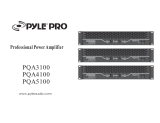
NOTICES
Never:
• Move or relocate the printer or the system controller without
first contacting Xerox for approval.
• Use a ground adaptor plug to connect equipment to a power
resource receptacle that lacks a ground connection terminal.
• Attempt any maintenance function that is not specifically
described in this guide.
• Remove any covers or guards that are fastened with screws.
There are no operator-serviceable areas within these covers.
• Override or “cheat” electrical or mechanical interlock devices.
• Use supplies or cleaning materials for other than their
intended purposes.
• Operate the equipment if unusual noises or odors are
noticed. Disconnect the power cord from the power source
receptacle and call your Xerox service representative to
correct the problem.
Ozone information
This product produces ozone during normal operation. The
ozone produced is dependent on copy volume and is heavier
than air. Providing the proper environmental parameters as
specified in the Xerox installation instructions ensures that
concentration levels meet safe levels.
U.S. only: If you need additional ozone information, request the
Xerox publication, Ozone, by calling Xerox Product Safety at the
following toll-free number:1-800-828-6571.
Radio communication
This equipment has been tested and found to comply with the
limits for a Class A digital device, pursuant to Part 15 of the FCC
Rules, for U.S. markets, and with the EEC 82/449 standard for
VDE 08791 Class A device, for non-U.S. markets. These limits are
designed to provide reasonable protection against harmful
interference when the equipment is operated in a commercial
environment.
CAUTION: This equipment generates, uses, and can radiate
radio frequency energy and, if not installed and used in
accordance with this guide, may cause harmful interference to
radio communications. Operation of this equipment in a
residential area is likely to cause harmful interference that you
are required to correct at their own expense.
iv XEROX 4890 HIGHLIGHT COLOR LPS OPERATOR GUIDE






















